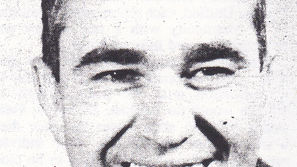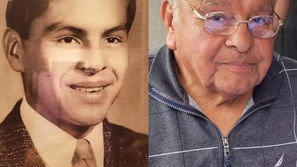Opinion: Best inventions of the year
- Jim Glynn
- Nov 27, 2021
- 4 min read
Time’s current magazine issue features a 30-page spread on “The Best 100 Inventions of 2021.” The entire article, by seven staff writers and photographer Margeaux Walter, is both informative and interesting. I recommend it because it also gives us a glimpse into what we might expect in the very near future. In the space allotted to me, of course, I can only highlight a few.
Story Time Chess
The classic game of chess has traditionally been embraced by the big-brained Mensa crowd, and grand masters have become national icons, like Boris Spassky of Russia or Bobby Fischer of the United States. Now, Story Time Chess combines storytelling with established rules of chess. It appeals to children as young as three by transforming the chess pieces into various characters in a story line. For example, in a fairy tale, the king may be an over-indulgent man whose belly is so full of food that he can only move one square at a time.
I like the idea because it combines long-term strategic planning with immediate tactical operations, training children’s brains to hold more than one thought at a time. In a way, it also demonstrates the value of delayed gratification; that is, giving up something now (perhaps a pawn) for a bigger reward (maybe a bishop or a queen) in the future.
Boox
Almost unbelievably, more than 200 billion cardboard boxes are shipped around the world annually, and most of them are used once and then wind up in landfills or the ocean. Boox has introduced a box, made of polypropylene, that can be reused about 20 times before being recycled.
Each Boox box folds flat, has a QR code that may be scanned, and bears a return label. No other box or label is required to return it to the manufacturer so that can be used again.
Recycled Lego Bricks
I’ve always maintained that if a child can have only one toy, it should be a set of building blocks. When I was a kid, blocks were made of wood, but for decades the industry favorite has been Lego plastic blocks.
As many news stories and features have informed us, much of the PET (polyethylene terephthalate) plastic used in bottles and other containers now contaminate our rivers, lakes, and oceans. However, in June, Lego revealed that after three years of research and testing, its scientists and researchers have found a way to turn this waste into recycled PET bricks that are nearly identical to the current product of the Danish manufacturer. Lego uses 100,000 metric tons of plastic annually.
Mosquirix Vaccine
Unless you’ve been living in an igloo on a remote island in the Aleutians, you know that three pharmaceutical companies have developed an FDA-approved COVID-19 vaccine. But, did you know that a vaccine to prevent malaria has been developed through research funded by the Bill and Melinda Gates Foundation and GlaxoSmithKline?
Malaria, an endemic disease in the U.S. before 1951, is now rare: 1,500 cases annually, only 5 of which result in death. However, the malady kills 500,000 people worldwide each year. And half of the victims are children under five. GSK’s new vaccine cuts infections by 40 percent and severe cases by 30 percent.
SupPlant
Especially here in the San Joaquin Valley, we are well aware that there is a delicate balance between water usage/water conservation and crop production. Now there is an AI-enabled sensor developed by the Israeli agritech company SupPlant that is placed in the soil or on the plant that lets farmers know when and how much to water.
The algorithm that operates the system “calculates plant needs, soil moisture, climate conditions, and weather forecasts.” Farmers in 14 countries are currently using SupPlant, and it is being tested on Mexican mango crops where it is reducing water consumption by 15 percent and increasing yields by 20 percent.
Huue ‘Green’ Blue Jeans
Historically, blue was the color that was hardest, and therefore the most expensive, to dye materials. That’s partially because only one European plant, Istatis Tinctoria, can produce the color. Otherwise, indigo had to be brought in from Mesopotamia or other parts of Asia. Consequently, blue clothing was, at one time, only worn by the rich; hence the expression “royal blue.”
By the time that our modern concept of jeans was developed by Levi Strauss during the California Gold Rush, the color blue was readily available because of changes in the dyeing process and the availability of New World plants. Today, more than 4.5 billion pairs of blue jeans are sold annually, and the runoff from indigo dye takes a toll on the environment.
Time reports, “Biotechnology company Huue has specially engineered bacteria that turn natural sugars into indigo-identical dye — without the environmental impact — by mimicking how enzymes in plants create colors.” It plans to start shipping the new “green” blue jeans before the new year.
ElectReon
One, and perhaps the only, reason that I’m not in the market for an electric vehicle to replace my gas guzzler is not so much the range that one gets (up to 300 miles), but rather the time that it takes to recharge the battery. For example, if one wanted to drive from Fresno to San Diego (345 miles), she or he would have to stop somewhere along the way to recharge the battery, and that process takes about two hours. That means that a six-hour drive would take eight hours. And most of us — in particular, me — don’t have the patience to just sit around while the car recharges.
ElectReon, an Israeli firm, asks, “What if electric vehicles could be charged by the very streets upon which they drive?” So, it is developing an in-road inductive charging system that powers EVs by electric fields generated by coils under the asphalt, in much the same way as a wireless charger works on your cell phone.
Although I’m usually somewhat pessimistic about the future, news like this makes me a bit more hopeful.
• • •
Jim Glynn, Professor Emeritus of Sociology, may be contacted at j_glynn@att.net.


























Comments